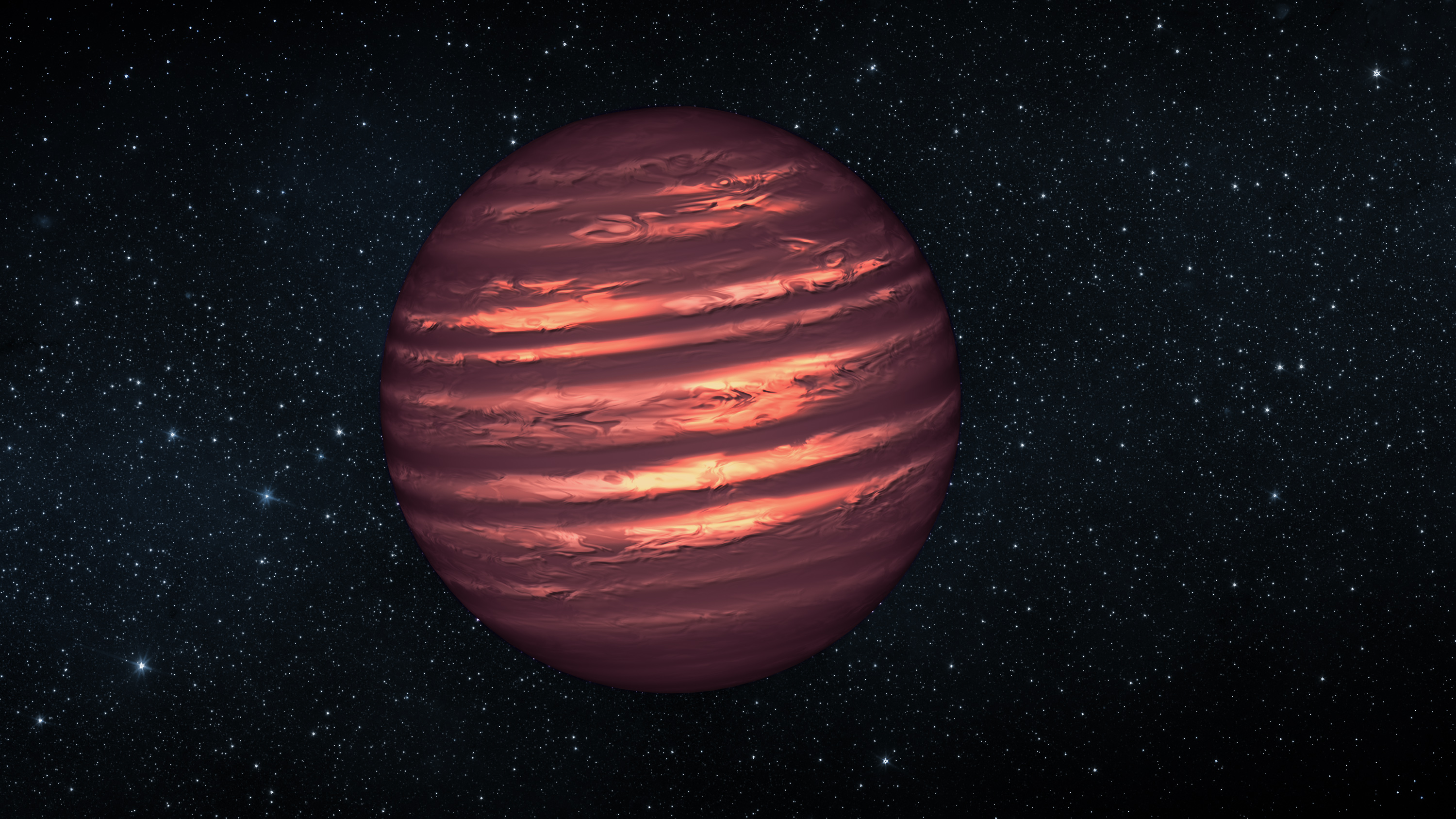Citizen scientists create 3D map of brown dwarfs in our sun's neighborhood
A citizen scientist group has created the most complete map to date of brown dwarfs neighboring our solar system.
Celestial bodies known as brown dwarfs, which are essentially failed stars, are too big to be considered planets and too small to be considered stars. Members of a NASA-funded project called Backyard Worlds: Planet 9 — which includes both professional scientists and volunteer "citizen scientists" — created a 3-D map of hundreds of brown dwarfs discovered within 65 light-years of the sun.
"Without the citizen scientists, we couldn't have created such a complete sample in so short a time,
J. Davy Kirkpatrick, lead author of the study and scientist at the Infrared Processing and Analysis Center at the California Institute of Technology, said in a NASA statement. "Having the power of thousands of inquiring eyes on the data enabled us to find brown dwarf candidates much faster."
Related: Brown Dwarfs: Strange Failed Stars of the Universe Explained (Infographic)

Brown dwarfs are difficult to find because they are incredibly faint and relatively small. Therefore, identifying and mapping all of the brown dwarfs in our solar system required data from several telescope sources and the help of Backyard Worlds: Planet 9 members, which includes a worldwide network of more than 100,000 citizen scientists.
The new 3D map captures brown dwarf varieties ranging in temperature from thousands of degrees Fahrenheit to below-freezing. The map spans an area of the Milky Way with a radius of 65 light-years, or about 400 trillion miles. The team confirmed the distances and positions of the brown dwarfs using NASA’s Spitzer Space Telescope, which was retired in January 2020.
A total of 525 brown dwarfs were mapped in the new 3D visualization, including 38 new brown dwarfs that were discovered by the citizen scientist group, according to a statement from the National Science Foundation’s NOIRLab, which provided the astronomical archives that the volunteers used to search for brown dwarf candidates.
Get the Space.com Newsletter
Breaking space news, the latest updates on rocket launches, skywatching events and more!
Mapping brown dwarfs in the sun’s neighborhood helps scientists better understand the distribution and diversity of celestial objects in this area compared to other parts of the Milky Way. While creating the new 3D map, researchers discovered that cool brown dwarfs are more rare in the sun’s immediate neighborhood (approximately 7 light-years) than astronomers originally thought, which suggests these objects may be too faint to find using existing telescopes.
"Thanks to the efforts of volunteers around the world, we have a better idea than ever of the objects in our cosmic backyard"” Aaron Meisner, co-author of the study and an assistant scientist at the National Science Foundation’s NOIRLab, said in the statement. "But we suspect that more of the sun’s cold and close neighbors still await discovery within our vast data archives."

Backyard Worlds: Planet 9, which is hosted on the citizen-science platform Zooniverse, uses data from NASA's Near-Earth Object Wide-Field Infrared Survey Explorer (NEOWISE) satellite collected between 2010 and 2011, as well as all-sky observations collected by the same satellite under its previous name, WISE.
Their findings were presented Jan. 13 at the 237th meeting of the American Astronomical Society (AAS) and published in The Astrophysical Journal Supplement.
Follow Samantha Mathewson @Sam_Ashley13. Follow us on Twitter @Spacedotcom and on Facebook.
Join our Space Forums to keep talking space on the latest missions, night sky and more! And if you have a news tip, correction or comment, let us know at: community@space.com.

Samantha Mathewson joined Space.com as an intern in the summer of 2016. She received a B.A. in Journalism and Environmental Science at the University of New Haven, in Connecticut. Previously, her work has been published in Nature World News. When not writing or reading about science, Samantha enjoys traveling to new places and taking photos! You can follow her on Twitter @Sam_Ashley13.









